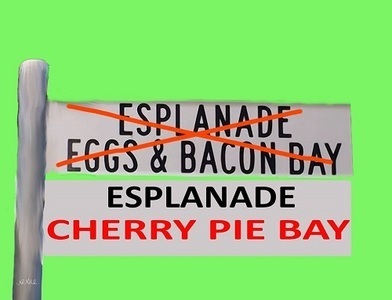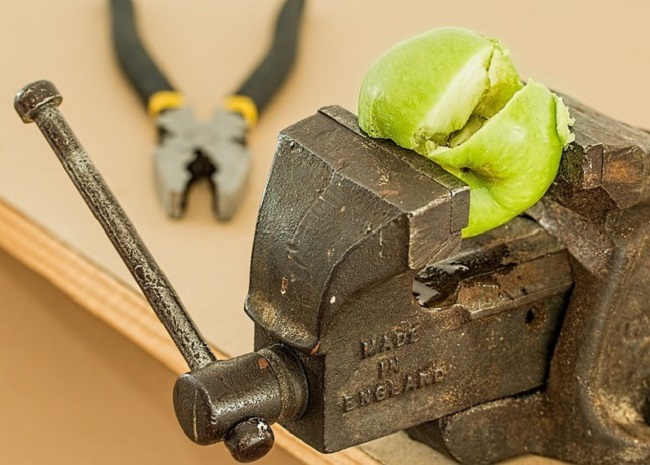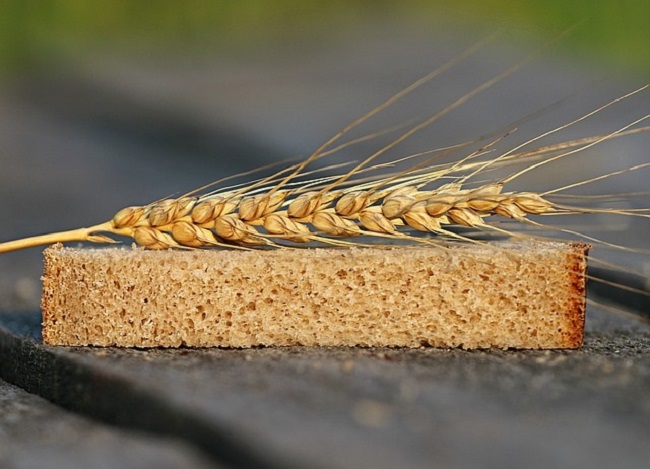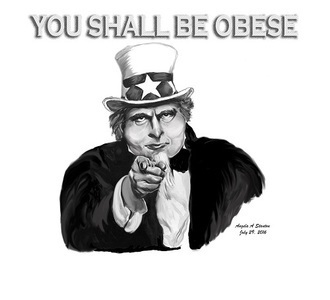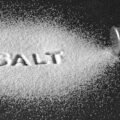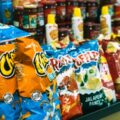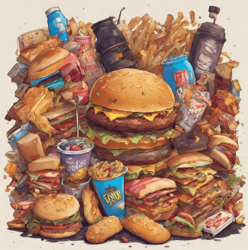Which Kills Your Heart? Sugar or Fat?
“So what DO you eat?”
I hear this question daily. It seems that the sugar civilization cannot envision life without sugar, refined or fiber-rich carbohydrates, such as cereals or grain. Indeed, I am part of the new fat civilization culture. So I daily have to answer two questions:
1) What can you eat if you don’t eat bread or pasta or cereal or any sweets?
2) All that fat you are eating must be really bad for your cholesterol and blood pressure.
Interestingly, while I have been on the low carbs high fat diet (LCHF) for a year and on the more extreme version called ketogenic for a few months now, contrary to what people may expect to find, I lost weight. I am never hungry. I don’t crave foods. My blood pressure, even right after running up four floors at the doctor’s office, is 117/77. My triglycerides dropped from 172 to 76 (that is great!). I no longer need afternoon naps. I don’t get muscle aches after intense “speed gardening” (I know, it is an oxymoron but I use that as exercise). All my allergies are gone as well. I am doing great! How is that possible? I think that the latest article published in JAMA provides a great explanation.
The Scam
On the 12th of September, 2016, JAMA Internal Medicine released a landmark article that reverberated in many leading papers and news stations – see the New York Times article here, CNN news article here, and NPR here. The journal article is written by scientists supported for this research by:
- Philip R. Lee Institute for Health Policy Studies, San Francisco, California
- Department of Orofacial Sciences, University of California, San Francisco, San Francisco
- Clinical and Translational Science Institute, San Francisco, California
- Department of Anthropology, History, and Social Medicine, University of California, San Francisco
- Department of Medicine, University of California, San Francisco, San Francisco
- Center for Tobacco Control Research and Education, San Francisco, California
- Cardiovascular Research Institute, San Francisco, California
- Helen Diller Family Comprehensive Cancer Center, San Francisco, California
Clearly the scientists publishing this landmark article are not supported by the typical type of support one would expect with a watershed article on nutrition. However, this is this is not your everyday academic article on nutrition. The article was published in a “side journal” of JAMA; a journal not expected to catch much attention and understandably so.
From my personal publishing experience, no academic article that has at its core the revealing of academic corruption could ever have published in a leading headline-grabbing academic journal. Therefore, I am tickled to joy seeing it being picked up by the media a day after its publication from a journal few were intended to read. The article presents strong evidence of corruption within academia and the sugar industry that set the animal fats industry to doom in order to push sugar. The findings by these investigators is nothing short of the corruption discovery of the tobacco industry and how they were profiting from their knowledge that tobacco causes addiction and harm.
This article, open access for free reading here, is not a data analysis but rather an examination of historical communication between key players in the sugar industry and academicians working for them at big name universities – including Harvard.
This unusual approach is reminiscent of the Watergate type investigation. Not surprisingly, their research of documents pointed to cover-ups and deliberate destruction of academic careers and people’s health. The sugar industry, then called Sugar Research Foundation, knew quite well that coronary heart disease, a key area of research and funding at that time, was not caused by fat but by sugar. The Sugar Research Foundation is still continuing its fight for the health and benefits of sugar with a name change to the Sugar Association. They funded most research, decided what to research, what findings were acceptable and what was to be published.
Findings that did not match their goal were swept under a giant carpet. Not surprisingly, nothing bad was ever found about the effects of sugar. Since coronary heart disease rates continued unabated in that era (and still do today), they pushed all blame on saturated fat and cholesterol (as the blame is still on these today). Luckily, that very tall carpet holding all the truth, has now been shaken free from dust, revealing the corruption. Critically, we now know with certainty that sugar contributes to a host of problems, including coronary heart disease, obesity, metabolic syndrome and type 2 diabetes, whereas fat may not be involved at all. Even brain-health deterioration is now seen to be caused by sugar rather than fat because the brain has insulin receptors whose resistance is thought to be responsible for metabolic diseases such as Alzheimer’s disease, in addition to type 2 diabetes and obesity.
In the process of pushing sugar and low fat, the Sugar Research Foundation destroyed not only academic careers, such as John Yudkin, a physiologist and nutritionist and professor of nutrition in the Queen Elizabeth College in London, but also, the health and lives of millions (if not billions) of people around the world. The lies still continue to mislead; Tasmania believes that apple or cherry pie is healthier than bacon and eggs and wants to rename a city accordingly.
“Considering the high levels of cholesterol and saturated fat in eggs and bacon, the area may as well be called ‘Heart Attack Bay,’” said a spokeswoman not realizing that it is questionable if cholesterol has anything to do with heart attacks at all. Cholesterol is vital to human health and is protective against coronary heart disease and is not the cause of it. HDL and LDL are not cholesterol but lipoprotein balls that carry cholesterol inside of them. Having high or low HDL or LDL tells nothing about how much cholesterol we have. The statement of the spokeswoman indicates a complete lack of understanding. Cholesterol is not made from fat but from carbohydrates in a rather complicated process.
There are many books leading the way in helping people understand that refined carbs, cereal, bread and pasta, soft drinks, fruit juices, sweet fruits (like pineapples) and vegetables full of starch (like potatoes) have caused a massive metabolic syndrome across the globe (1-7).
Back to my story and how eating more fat changed my health entirely.
Eating Fatty Foods Versus Carbohydrates
This is the first paradox in the heart-health hypothesis of increased carbohydrates to reduce cholesterol. Eating more carbohydrates will not reduce cholesterol because cholesterol is made from carbohydrates. Increased carbs leads to increased cholesterol. Cholesterol is made from carbs, in particular fructose is a great source of triglycerides. Triglycerides are the bad lipids that cholesterol tests measure—so I don’t eat fructose. Removing fructose means the removal of all refined sugars since sugar is made from glucose and fructose (disaccharide). I definitely don’t want fructose as a result of what it becomes—and I am not just talking about triglycerides. Fructose converts to ethanol in the liver before it becomes triglycerides. In fact, soft drinks, fruit juices, and smoothies all become ethanol and then triglycerides in the liver. Ethanol is the stuff in my car’s gasoline; I don’t think I want that in my liver. Fructose also causes non-alcoholic fatty liver disease, something I had and reversed by quitting fructose and all sugars completely. All I can say is that my grandchildren do not drink fruit juices or sodas.
Glucose Contributes to Heart Disease
Glucose causes metabolic syndrome. Metabolic syndrome contributes to heart disease. Why would one eat a diet high in glucose? Glucose spikes insulin, which over time leads to pancreatitis and other wonderful conditions ending up in type 2 and later type 1.5 diabetes (when your pancreas cannot make enough insulin). I don’t want diabetes of any kind so I don’t eat glucose either. Special note: the page I linked you to (Harvard University) that explains how glucose and carbs in general lead to type 2 diabetes sports a photo of grain flour as its background. Don’t you find it odd that a page that explains that grains are partly to blame for diabetes advertises to increase grains for heart health on their second page (under fiber)?
Why Do We Hate Fat?
The human brain is between 60% and 70% fat (depending upon what article you read) nonetheless it is the most critical element in brain development and repair. Are we so concerned about our heart that we forget that without a brain the heart is useless? If I don’t eat the right kind and amount of fat, what will my brain become? Fat is essential for the brain development of children and the brain does not stop developing until you die. Your brain needs all fats: saturated, monounsaturated and polyunsaturated fats but more saturated fats for myelinating axons (in English: insulation for the voltage carrying parts of the brain’s neurons). Alzheimer’s disease, which is now rampant as a result of the low fat and high carbs diets, can potentially be prevented by diets that prevent hypertension, diabetes and obesity. When fats were removed from food, sugars were put in to replace them and people ended up with hypertension, diabetes, and obesity, which clearly then increases Alzheimer’s and other types of dementia, and coronary heart disease in addition to all metabolic diseases.
It is time to put fats back to where they belong. Fats are essential for maintaining brain health, whereas eating sugar is not. Amazingly Harvard University now agrees–controversy is good.
And here, I connect back to something important in terms of vegetables and fruits. Gout, predominantly believed to be caused by protein, is caused by fructose and alcohol. Since there is neither fructose nor alcohol in meat, gout cannot be caused by meat but by elements high in “heart healthy” foods, such as grains, fruits, vegetables, and even red wine (or other alcohol). It is also an important discovery that while most minerals are found mainly in animal meats and fish, even vitamins have taken on a different meaning when you learn that one only needs to supplement vitamin C, for example, while eating a carbohydrate rich diet (1). That is because insulin receptors are using both glucose and vitamin C and the two compete. Since glucose has priority, much C is released unused. This explains why the LCHF diets need potentially no vitamin supplementation whereas high carbohydrate diets do. However, vitamin supplementation has its own controversy as well.
What Can You Eat?
Now that I have connected as many dots as space allows, I hope I answered the two questions I asked up front, which I summarize here:
1) “What can you eat if you don’t eat bread or pasta or cereal or any sweets?” Everything that is fat, meat, or dairy with limited low fructose/glucose fruits–I can also eat leafy green veggies but with the recent concerns of various infections I am not fond of taking that chance. My meals include a moderate amount of fatty protein like red meat and fatty fish and absolutely the smallest amount of fruits and vegetables if any at all (I only eat blackberries). I eat lots of cheese, sour cream, and drink whipping cream (unflavored) and whole milk. I know that your next question, though silent, is: what about fiber for healthy bowel movement? Nah… that belongs to the story book of the “heart-health” fantasy as well. Fiber pulls water from your cells thereby creating bulk and wonderfully constipating plugs as a result. You need fiber only if you eat loads carbohydrates. No fiber and limited carbs means no constipation.
2) “But all that fat you are eating is surely bad for your cholesterol and your blood pressure!” – Since bad cholesterol (triglyceride) is made from carbs (not fat), something that I don’t eat, my cholesterol is actually great. Since the human brain is about 70% fat, it needs to be filled with fat and not sugar. I now can think clearly; I am in a good mood; I am not tired; I don’t have sugar crashes and I don’t have diabetes either. My blood pressure is 117/77, absolutely perfect (it always was this low and never changed). Life is great without sugar, fruits, veggies, and grains. I am living the high life on fats.
Enjoy the new science and enjoy your fatty meats. Dump all that sugar and grain and eat wholesome healthy fatty foods to support your nervous system and your heart-health for real.
Sources
- Taubes G (2011) Why We Get Fat: And What to Do About It (Anchor) Reprint edition December 27, 2011 Ed p 288.
- Taubes G (2008) Good Calories, Bad Calories: Fats, Carbs, and the Controversial Science of Diet and Health (Anchor).
- Teicholz N (2015) The Big Fat Surprise: Why Butter, Meat and Cheese Belong in a Healthy Diet (Simon & Schuster; Reprint edition, New York) p 496.
- Sanjay Gupta MD & Lustig MD, Robert H (2013) Sugar. (https://www.youtube.com/watch?v=HezSlrJ1k7w).
- Robert H. Lustig M.D. MSL (2012, 2013, 2014) Fat Chance; Beating the Odds Against Sugar, Processed Food, Obesity, and Disease (Penguin, New York, New York).
- Lusting JYwRH (2013) Pure, White, and Deadly: How Sugar is Killing Us and What We can Do To Stop It. (Penguin Books).
- Dr. Kendrick M (2007) The Great Cholesterol Con; The trusth about what really causes heart disease and how to avoid it (John Blake Publishing, London, England) p 270.
